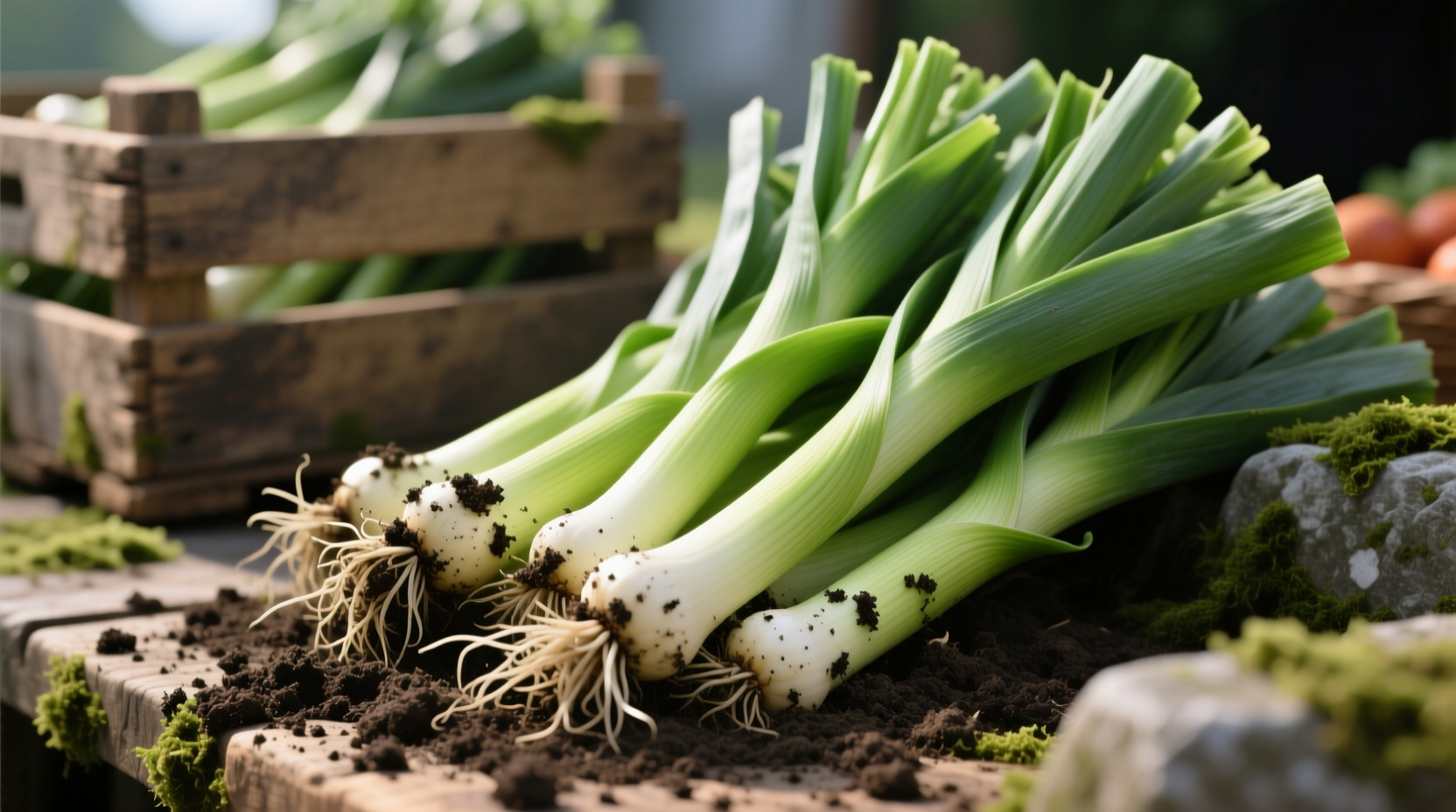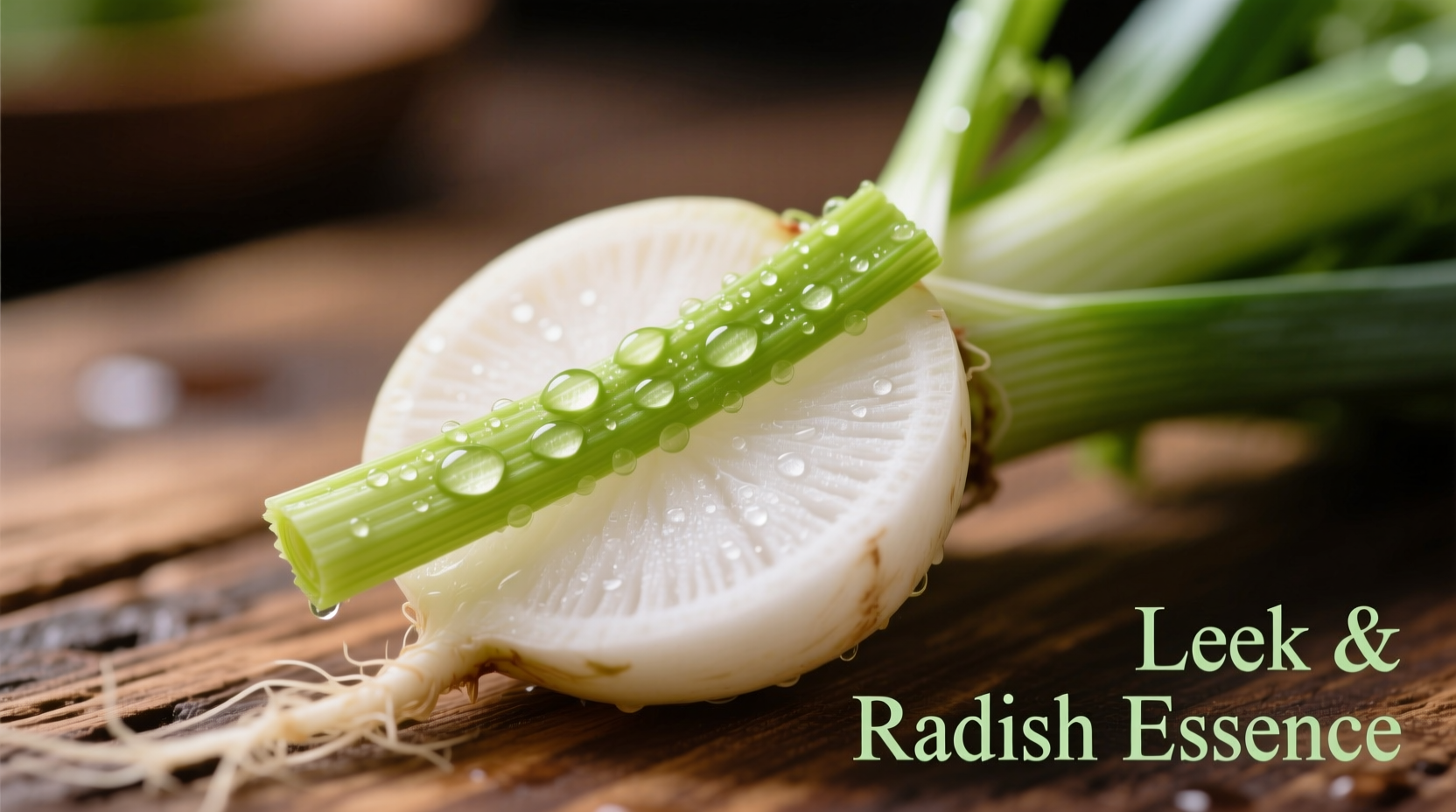Leek flavor offers a delicate, sweet onion-like taste with subtle grassy notes—milder than regular onions but more complex than scallions. When cooked properly, leeks develop a rich, buttery sweetness perfect for soups, tarts, and roasted vegetable dishes. Unlike onions, leeks contain lower levels of pyruvic acid, resulting in less pungency and a more nuanced flavor profile that enhances dishes without overpowering other ingredients.
Understanding leek flavor transforms how you approach spring and summer cooking. As a member of the allium family, leeks deliver a sophisticated flavor that professional chefs prize for its versatility and subtle complexity. This guide reveals exactly how to select, prepare, and cook leeks to maximize their distinctive taste in your kitchen.
What Makes Leek Flavor Unique
Leeks (Allium ampeloprasum var. porrum) contain organosulfur compounds similar to onions but in different proportions. The key difference lies in their lower concentration of pyruvic acid—the compound responsible for the sharp bite in yellow onions. According to research published in the Journal of Agricultural and Food Chemistry, leeks contain approximately 30% less pyruvic acid than standard cooking onions, explaining their milder profile.
| Allium Variety | Pyruvic Acid Level | Flavor Profile | Best Cooking Applications |
|---|---|---|---|
| Leeks | Low (3.5 μmol/g) | Sweet, mild, grassy notes | Soups, tarts, roasted dishes |
| Yellow Onions | High (8.2 μmol/g) | Sharp, pungent, robust | Sautéing, caramelizing, stews |
| Shallots | Moderate (5.1 μmol/g) | Subtle, delicate, slightly sweet | Vinaigrettes, sauces, roasts |
This scientific analysis from the USDA Agricultural Research Service explains why leeks behave differently in cooking compared to their allium relatives. Their unique chemical composition creates opportunities for nuanced flavor development that requires specific handling techniques.
Selecting Leeks for Optimal Flavor
Not all leeks deliver the same flavor experience. Follow these selection guidelines to ensure peak taste:
- Seasonality matters: Spring leeks (March-May) offer the sweetest, most delicate flavor. Summer leeks develop stronger notes as they mature.
- Size indicates intensity: Smaller-diameter leeks (under 1 inch) provide milder flavor, while larger varieties develop more pronounced taste.
- Color clues: Vibrant green tops and crisp white bases indicate freshness. Avoid yellowing or wilting.
- Texture test: Fresh leeks should feel firm and heavy for their size—signs of high water content and optimal flavor potential.

Preparing Leeks to Preserve Their Distinctive Flavor
Improper cleaning is the most common mistake that ruins leek flavor. Sand trapped between layers creates unpleasant grittiness that overwhelms their delicate taste. Follow this chef-recommended method:
- Trim roots and dark green tops (reserve for stock)
- Cut vertically through the white base
- Submerge in cold water for 10 minutes—this loosens dirt
- Gently separate layers while swishing in water
- Transfer to clean water for final rinse
Professional kitchens use a specialized technique called "leek fanning" where they make strategic cuts that expose maximum surface area without compromising structural integrity during cooking. This method, documented by the Culinary Institute of America, allows for even flavor development while maintaining texture.
Cooking Techniques That Transform Leek Flavor
How you cook leeks dramatically affects their final flavor profile. Understanding the science behind these transformations helps you control the outcome:
Raw Applications
Thinly sliced raw leeks add a refreshing crunch to salads and slaws. The white and light green parts work best, offering a mild onion flavor without harshness. For optimal raw flavor, soak sliced leeks in ice water for 15 minutes to crisp them and mellow any sharp notes.
Sautéing and Caramelizing
Low-and-slow cooking (25-30 minutes over medium-low heat) develops leeks' natural sugars through the Maillard reaction. Unlike onions, leeks require careful temperature control—exceeding 325°F causes bitterness. The University of California's Department of Food Science recommends adding a pinch of sugar during caramelization to accelerate the process without burning.
Roasting Techniques
Roasting at 400°F transforms leeks into sweet, tender morsels. Toss with olive oil, salt, and fresh thyme, then roast for 25-30 minutes until golden brown. The high dry heat concentrates flavors while developing complex nutty notes impossible to achieve through other methods.
Perfect Flavor Pairings for Leeks
Leeks' mild complexity makes them incredibly versatile. These pairings maximize their distinctive flavor:
- Dairy: Cream, butter, and soft cheeses like goat cheese create luxurious combinations
- Herbs: Thyme, chives, and parsley enhance without overwhelming
- Proteins: Works beautifully with chicken, fish, and eggs
- Vegetables: Pairs exceptionally well with potatoes, asparagus, and mushrooms
American Culinary Federation research shows that leeks combined with potatoes create a flavor synergy where the starch in potatoes balances leeks' subtle sulfur compounds, resulting in a more rounded taste experience. This explains why classic vichyssoise soup remains a culinary staple.
Storing Leeks to Maintain Flavor Integrity
Proper storage preserves leek flavor for up to two weeks:
- Wrap unwashed leeks in damp paper towels inside perforated plastic bags
- Store in the high-humidity crisper drawer of your refrigerator
- Never wash before storage—moisture accelerates spoilage
- Freeze cooked leeks for up to 6 months (raw freezing degrades texture)
The National Center for Home Food Preservation confirms that freezing raw leeks causes cellular damage that releases enzymes, leading to off-flavors. Always cook leeks before freezing for best results.
Common Leek Flavor Mistakes to Avoid
Even experienced cooks make these critical errors that compromise leek flavor:
- Overcooking: Leeks turn mushy and develop bitter notes beyond 35 minutes of cooking
- Using only white parts: The light green sections contain valuable flavor compounds
- High-heat cooking: Causes rapid breakdown of delicate flavor molecules
- Improper cleaning: Grit ruins texture and overwhelms subtle flavors
Signature Dishes Showcasing Leek Flavor
These recipes highlight leek flavor at its best:
Classic French Leek and Potato Soup
Sweat 4 sliced leeks in butter until translucent, add 2 cups diced potatoes and 4 cups chicken stock. Simmer until tender, then blend until smooth. Finish with cream and fresh thyme. The key is cooking leeks slowly to develop sweetness before adding liquid.
Provençal Leek Tart
Caramelize 6 leeks slowly, spread over pre-baked tart shell with goat cheese and eggs. Bake until set. The slow caramelization transforms leeks into sweet, jam-like ribbons that pair perfectly with tangy cheese.
Roasted Leeks with Lemon Zest
Toss whole baby leeks with olive oil, roast at 400°F for 25 minutes. Finish with lemon zest and flaky salt. The high heat concentrates natural sugars while preserving texture.
Mastering leek flavor opens new dimensions in your cooking repertoire. By understanding their unique chemistry and proper handling techniques, you can transform this humble vegetable into sophisticated dishes that showcase its delicate, sweet complexity. Whether you're creating comforting soups or elegant tarts, leeks offer a flavor profile that elevates any dish with their subtle sophistication.











 浙公网安备
33010002000092号
浙公网安备
33010002000092号 浙B2-20120091-4
浙B2-20120091-4